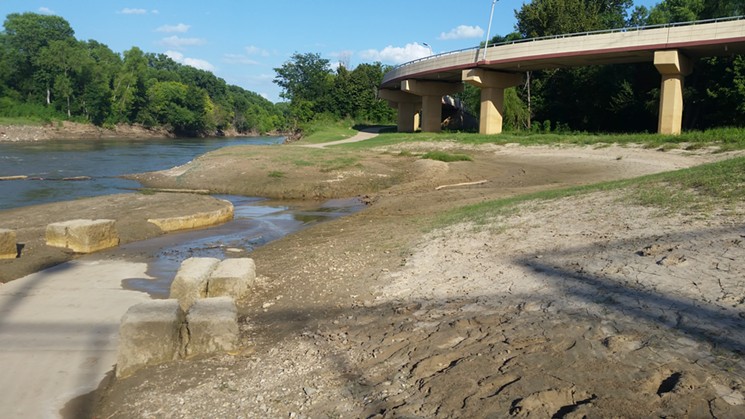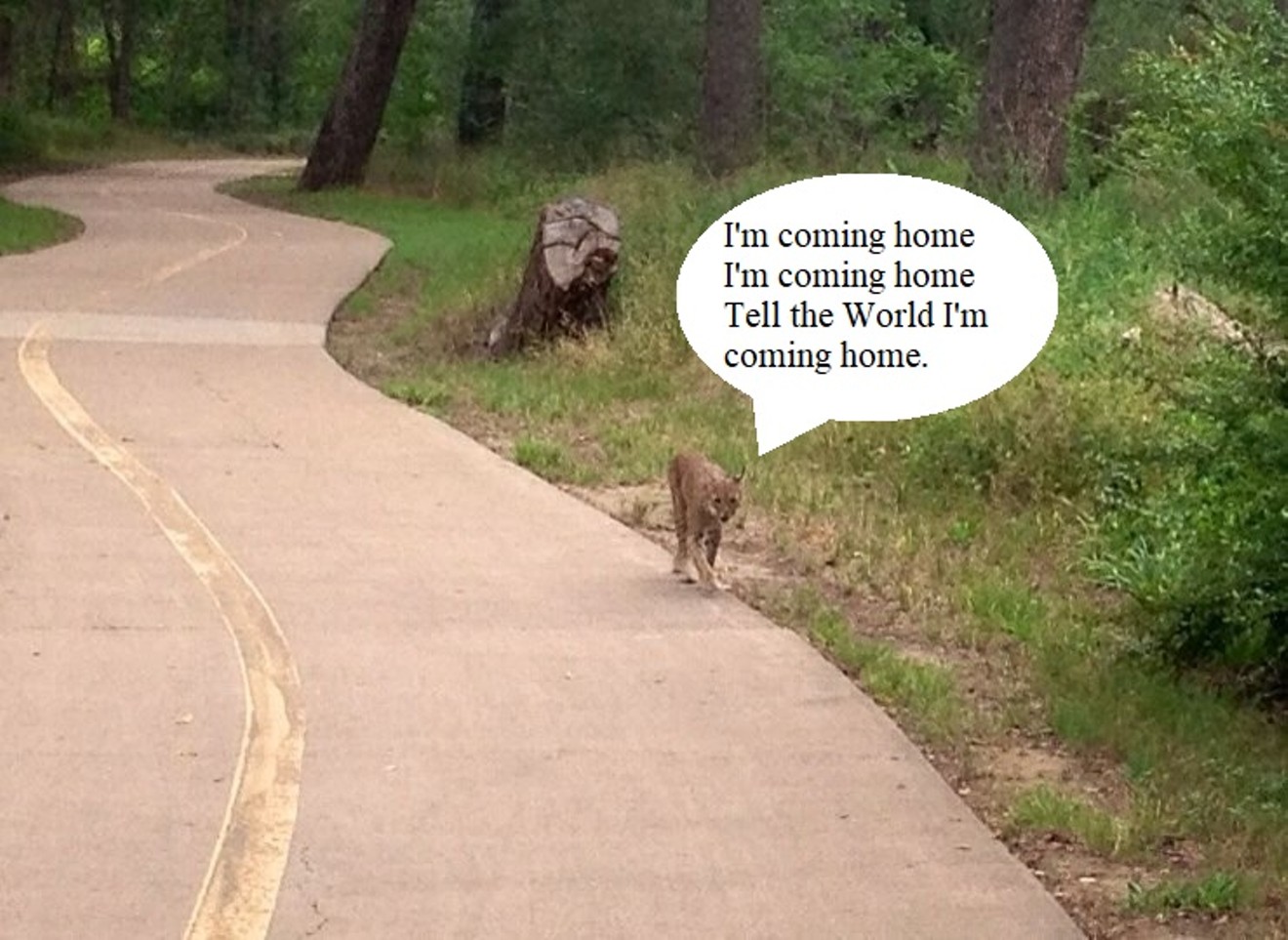But, remember, we’re going out to the Outermost Thought Ozonosphere now, so you will need your pressurized suit, an open mind and a bottle of gin. This is exciting.
It has to do with Dallas making decisions and doing things that will help save the world and make Dallas a global gateway to the future. Be sure to carefully close all of the seals on your suit and lay off the gin for now, please.
First, while we’re on our way up, some backstory: The conservation movement is only about a century old, which, in terms of human history, is an eye-blink. Conservation today is based on and deals mainly with what demographers call “The Great Acceleration,” the period from 1750 onward when advances in science, especially in medicine, sanitation and agriculture, enabled a sudden explosion of population growth.
Beginning with Paul Ehrlich’s book Population Bomb, published in 1968, most of the modern literature of demographics and conservation has argued — when you strip away the caveats and polite obfuscation — that we are totally screwed. Soaring population means soaring consumption means soaring exploitation of nature means terminal despoliation of the planet. Plan? Might as well hit that gin.“At the core of our argument is the seemingly contradictory statement that the mechanisms that are destroying nature are laying the foundation for its long-term recovery." — BioScience
tweet this
But, wait. We’re almost out there. Take a couple of deep breaths, check suit for leaks.
An article this month in BioScience, a scientific journal published by Oxford University, offers a 90-degree turn from all of those grim secular end-times predictions. In "From Bottleneck to Breakthrough: Urbanization and the Future of Biodiversity Conservation," three authors associated with the Wildlife Conservation Society in New York argue that we haven’t been looking far enough out there.
Yes, they say, population growth enabled by scientific advances has greatly challenged the capacities of nature. Yes, we dig up more ore, pollute more water, burn more hydrocarbons and dirty up more air, do all kinds of things that harm the planet.
But the authors offer hard data to show that at the same time and even in the same process, humankind is moving toward a smarter, more humane arrangement. We are becoming overwhelmingly more urban and less rural, and that’s good for the planet, they say.
Urban dwellers are more productive. They are able to spend less of their income on stuff, more of it on living, like reading, going to the theater, bowling, curling, being alive. The article also argues that population growth is going to fall off dramatically and poverty also will decline as we urbanize. They base these predictions on trends already visible worldwide.
But here’s the problem. The authors, Eric W. Sanderson, Joseph Walston and John G. Robinson, play sort of a literary bait and switch on us. First they paint this great picture where everything turns out wonderful, Earth isn’t overcrowded after all, everybody’s living over a Starbucks, the countryside is pristine, hardly anybody goes poor except for newspaper reporters and life goes on.
Then they tell us it may not happen and we’re all going to die. Maybe. They say:
“At the core of our argument is the seemingly contradictory statement that the mechanisms that are destroying nature are laying the foundation for its long-term recovery. Passing through the bottleneck is necessary to reach the breakthrough. The conservationist's paradox is that the same forces that are destroying nature now are also creating the circumstances for long-term success. The conservationist's challenge is to keep the bottleneck open wide enough so that nature can survive to a breakthrough.”
Please pay attention to that last line: “ … keep the bottleneck open wide enough so that nature can survive to a breakthrough.”
What does that mean? Keep enough land fallow, protect enough rivers from pollution, save enough clean air so we don’t all suffocate before we get to the environmental promised land? Yes. Sure. Obviously. But it means something more than that.
If this prediction is right, if hope and promise lie ahead in a smarter, more urban world, then in order to get there, we have to keep the very idea of nature alive in our minds, the vision of it in our eyes. We have to be able to see it, smell it, touch it in order to know what it is and where.
Here is another thing they say in the article, and I’m going to translate and then call your attention to one word in particular:
"Breakthrough conservation suggests over time adjusting the management of protected areas, conceiving of these areas less as bastions against ever-mounting threats and more as source sites for restoring and rewilding continents and oceans."
Translation: We can’t just lock up areas as nature jails. No people get in. No nature gets out. Instead of that, they are saying, we have to take new places that are not now what we would consider natural and invite nature back into them. We need to see what nature does with those places.
The word to look for is rewilding because this word brings us squarely back to Dallas. On the table right now in Dallas is what may well be the biggest single urban rewilding proposal in this country, maybe in the entire urban world, allowing for my provincial ignorance of the entire urban world.
A coalition of conservation-minded groups is moving toward consensus to devote most of the more than 10,000 riparian acres along the Trinity River through the center of the city — never developed because the land is subject to flooding — to an enormous rewilding project. If and when that plan is carried out, it will create a vast almost-wilderness, the heart of nature beating in the center of a vast urban area.
And not just any urban area. Dallas is a strange kind of polarized poster child. On the one hand, Dallas is at the center of the kind of vast, planet-eating sprawl that will be the death of us all if never brought to heel.
On the other hand, the city proper has become a mecca for all of the values the authors of the article predict can save the planet. As younger people have flooded into the old city in recent decades, they have brought with them racial tolerance, an awareness of environmental issues, a skepticism for unbridled consumption and a joy in all those simple human just-walking-around things that allow people to enjoy life without having to set anything on fire.
The bad consequences are going to happen here — the bottleneck that the authors talk about. They already are happening. Hurricane Harvey in Houston was the bellwether threatening a Dark Ages plague of weather-triggered infrastructure catastrophe, the default of civil authority, vigilantism and anarchy.
But so are the good consequences possible here — the things leading to the breakthrough that the authors also talk about. All of the ideas and the trends that their article ties to the survival and flourishing of the planet are alive and well in Dallas.

The disastrous "whitewater feature," man-made kayak rapids in the Trinity River, is a good example of what the river will do to things we put in its way.
Jim Schutze
By multiple accidents of history, we have inherited a strange and unique asset in Dallas — 10,000 acres of undeveloped land in a corridor cutting right across the center of our city. We can do with it what we wish.
One way in which the rewilding concept is consonant with our condition as a city at this time is that it would cost a fraction of what it would cost to build out a typical 20th century man-made park-scape on that land. That’s a terrible idea anyway. The Trinity River is brutal and mercurial during our spring and fall monsoon seasons. Sooner or later, silt and erosion will always decimate the overdesigned man-made stuff that we put down there.“Breakthrough conservation suggests over time adjusting the management of protected areas, conceiving of these areas less as bastions ... more as source sites for restoring and rewilding continents and oceans.” — BioScience
tweet this
The rewilding idea is different. Instead of getting in nature’s way, we bow and step out of her way. We invite the bobcats and the grasses back into the space, then build cheap-to-maintain trails so we can go look.
I hope you won’t think this is overblown, but a managed wilderness-like area through the core of our city could become a cathedral for all of the ideas and concepts that the authors of the article call “The Breakthrough.” The river and the rewilded area reaching out from its banks would provide Dallas with a powerful vision of tomorrow.
And again — and I don’t think this is trivial — it could be cheap. Cheap is important. Cheap is good. Cheap is how we get there. Expensive with tchotchkes, bad. Path to hell, in fact.
Something as big and powerful as a rewilded Trinity River will shape the character of the city. It will give us something to live up to. And by the way — not that I think this important; I’m just tossing it out there — it will make Dallas something of an international star. I’m not vain. You’re not vain. So we don’t care. But I mean, eat your heart out, NYC.












